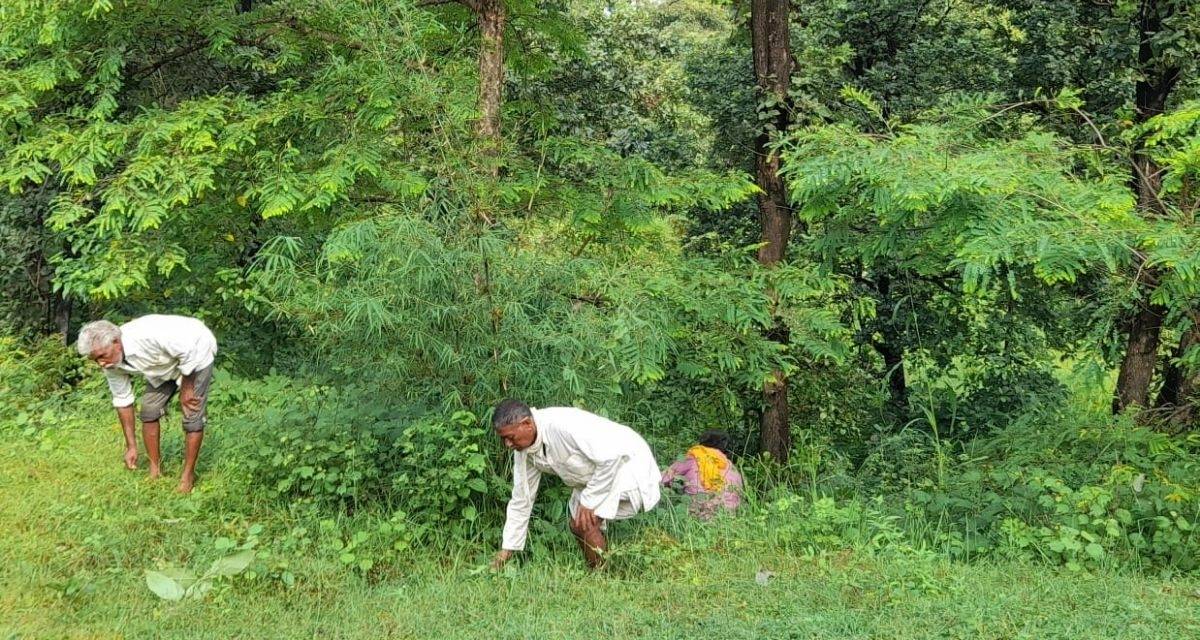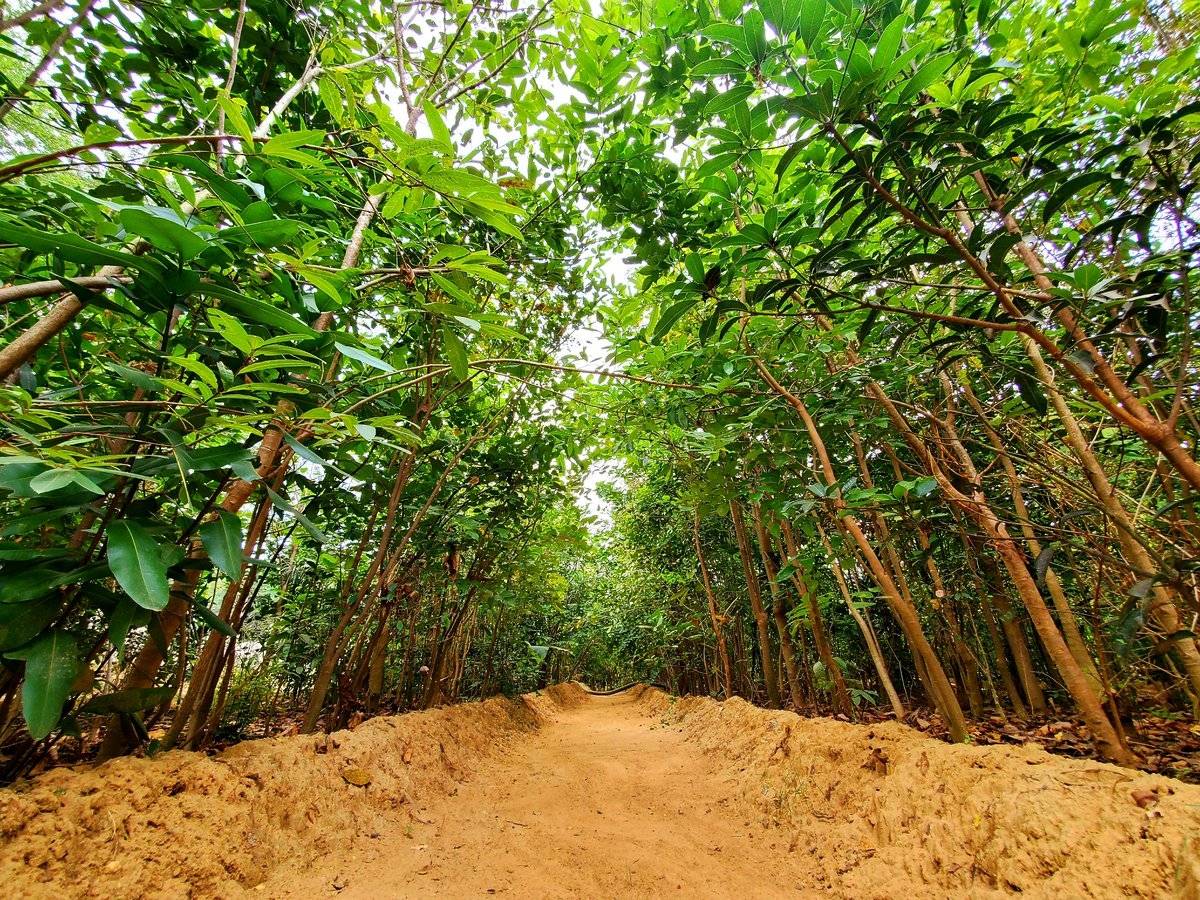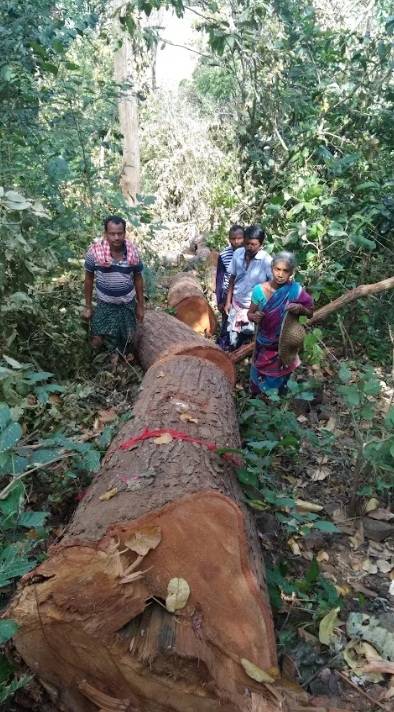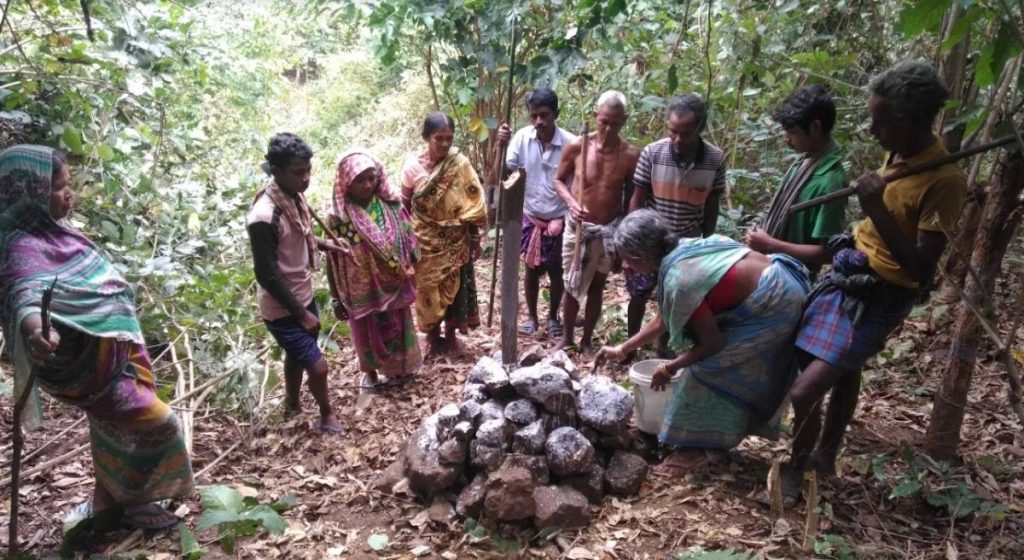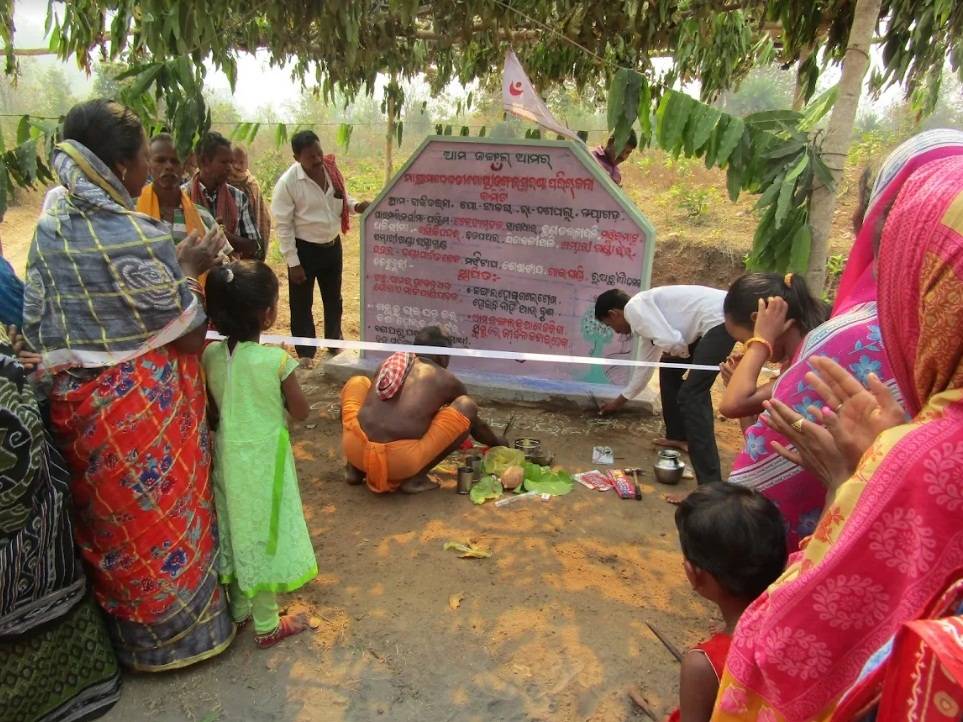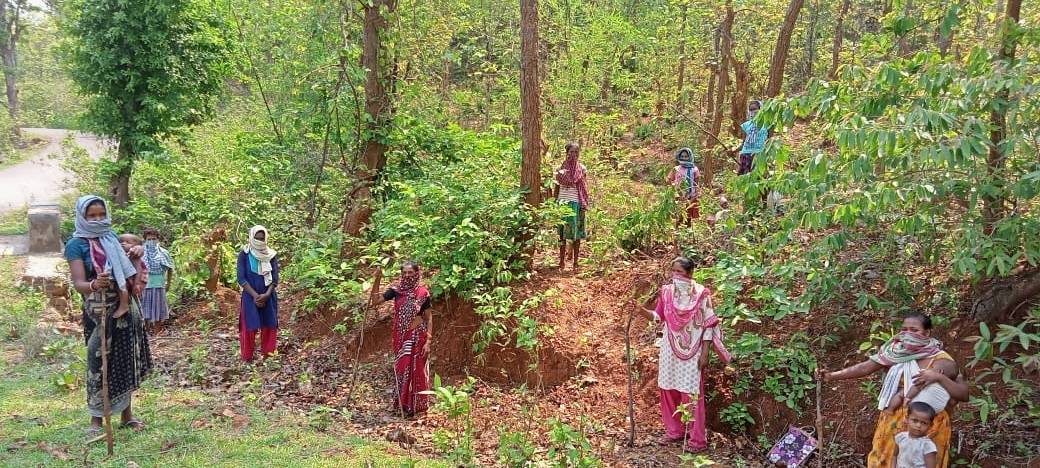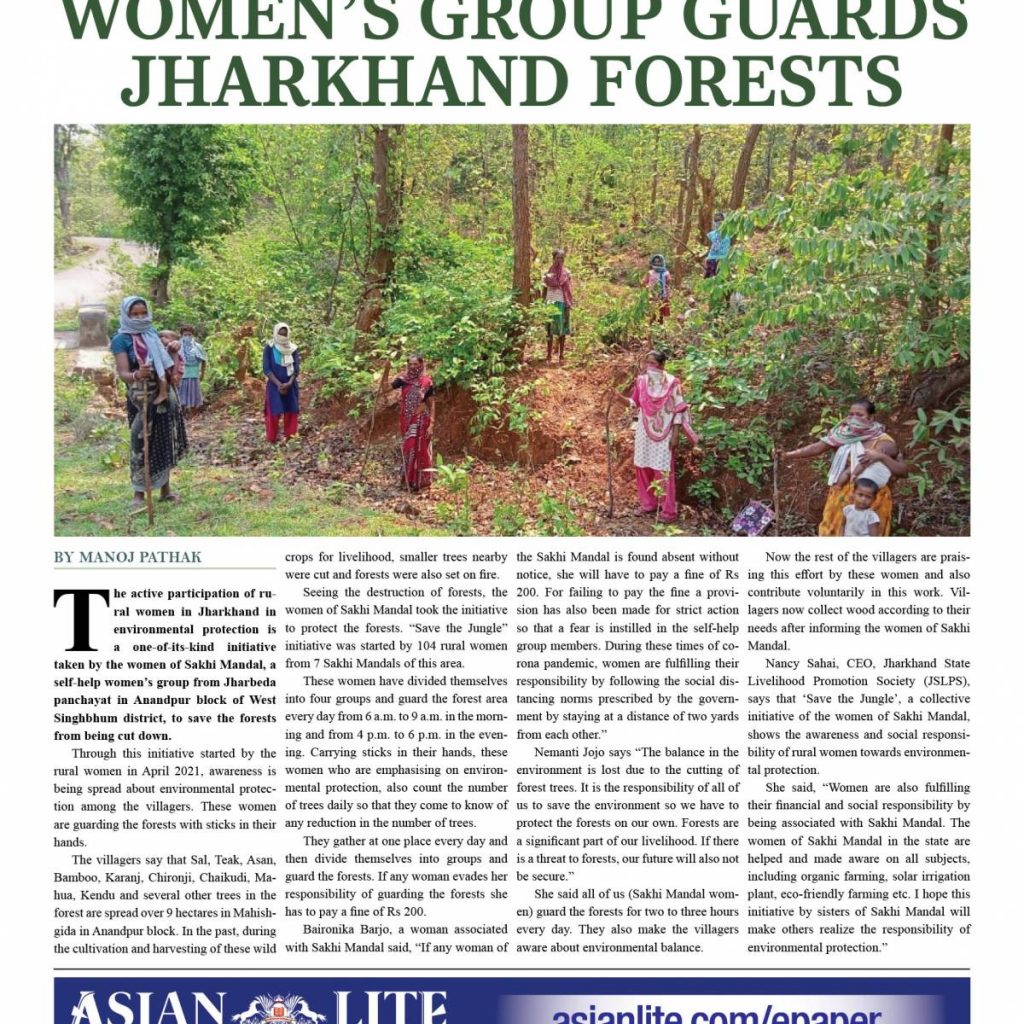To protect the forests, the villagers of Pathri are employing traditional knowledge passed down through generations…reports Suchita Jha
At the break of dawn, Gajendra Rokde walked down the village road carrying a lathi to protect himself from wild boars. Then, with three of his friends, he entered the 130-acre forest adjacent to their village of Pathri, situated in Madhya Pradesh’s Balaghat district.
In the absence of Mansaram, the appointed van rakshak (forest protector) who had fallen ill, the villagers had taken it upon themselves to patrol the forest.
“I’ll be here till noon to ensure that there are no trespassers who may cut down trees or harm the birds and animals in this forest. I’m checking for signs of smoke or sparks to put them out before they cause a forest fire,” Rokde said.
Having protected the forests for generations, the villagers of Pathri take turns inspecting the woods every morning. Due to their constant vigilance, there hasn’t been a single forest fire incident in this dense jungle in more than eight decades.
Meanwhile, there have been 54,321 fire alerts between January 1 and September 19 this year in Madhya Pradesh, as per the 2021 Forest Survey of India. This is the state with the largest forest cover in the country.
Pannalal Nagpure, the village’s Sarpanch said that he hasn’t heard of any forest fires in his area since when he was a child. “This jungle is ancient. I remember my grandfather used to be one of the caretakers of the forest. I haven’t heard of any forest fires in this jungle since British time. We don’t let anyone cut down healthy trees and only use what is needed,” he added.
An inherited, collective task
The jungle adjacent to Pathri is noted for a particular grass, known as Bid, used in Hindu funeral rites. This grass is an essential source of income for the villagers.
“The Bid grass grows to its full height by December and then starts drying up, increasing the risk of forest fires in March-April. The van rakshak removes the grass and dead leaves from the forest. People from other villages also buy it from us to thatch their roofs,” said Nagpure.
The villagers also collect dry sticks and dead tree branches and sell them to the locals at reasonable prices. “We only collect and auction the wood from trees that are already dead. The income generated through this helps us take up more developmental works in the village,” added Nagpure.
The village has a dedicated 15-member committee, called Sarvajanik Bid Samiti, named after the grass. The representatives of the committee are elected by the villagers every two years and are tasked with protecting the forest from any harm by appointing a van rakshak.
Rokde, who serves as the committee’s secretary, said that apart from bid the forest houses a diverse flora and fauna. It is home to trees like Sal, Teak, Mango, Neem, Banyan, Jamun and also animals like rabbits and wild boars alongside various butterfly species and birds.
“Earlier, there used to be a large population of vultures, but with time, they have become fewer in number,” added Rokde. He said that the forest department hadn’t conducted any survey or inspection as the forest area falls under revenue land.
Nagpure recalled that there were talks back in 2009 to bring the forest under the forest department, but it didn’t pan out due to reasons unknown to him. The villagers, however, think this is for the best.
“Our jungle will be snatched away from us and the forest department will start their activities here. We know this forest like the back of our hand. If people from distant areas are sent here for patrolling and caretaking, they will take time to learn the ropes and won’t listen to us,” said Rokde.
He also brings up the issue of Maoist activity in the region. “Though Balaghat is a Maoist area, the Maoists never stop us from entering the forest as they know that we will not harm it. But that equation may not be possible with outsiders,” he said.
Protecting the forest as a way of life
To protect the forests, the villagers of Pathri are employing traditional knowledge passed down through generations.
“We have learned everything from our forefathers. They used to cut the grass annually, and it became a tradition. People used to wait for December or January to repair their homes after rains when the grass was available. Though we have cemented houses now, and only a few people need the grass, we are continuing this tradition for the forest’s safety,” said Nagpure.
He added that the van rakshaks also collect dry leaves from the ground and put them in small pits dug in the forest to turn them into mulch. “This way, we don’t need any artificial fertilisers or chemicals for the trees as they get proper nutrition from the dead leaves and animal dung itself.”
The villagers also fiercely protect the forest from trespassers. “We love the trees here more than life itself. They are like our children, and we ensure that no one cuts them. In addition to the van rakshak’s daily care, all 15 members of the committee also conduct weekly inspections in the forest,” Nagpure said.
If the committee finds that a healthy tree has been cut down for selfish interests, there is a framework in place to ensure judgement and punishment.

“We call a meeting, and the person who has chopped down a tree or a shrub is summoned. The witness who saw them cutting down the tree is also called to testify. In most cases, the culprit accepts his fault and is fined. The culprit has to pay the money to buy five plants, and the cost of transportation is included in his fine. When the committee procures the plants, the person responsible for cutting down the tree is called again to plant them at the same spot,” Rokde added.
The time has now come to appoint a new van rakshak. Having been at his post for almost 20 years, the current van rakshak, Mansaram, said, “We always elect someone who knows how to take care of trees and doesn’t have any vested interests. I will just provide them with guidance as I’m too old to discharge my duties. It’s been a pleasure to serve the forests.”

